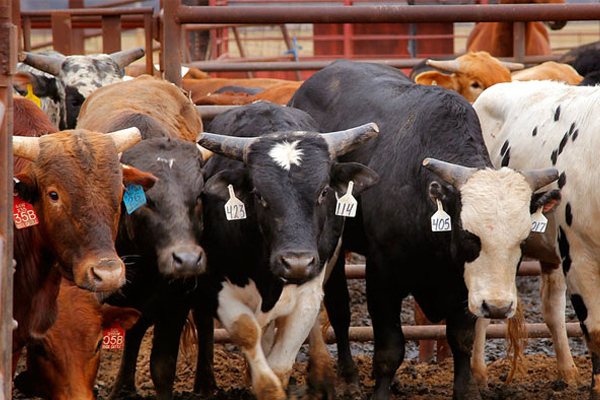March 7th 2024
Preliminary Life Cycle Assessment Report 2024-03
This life cycle assessment (LCA) has used updated life cycle inventory for US beef and dairy production to create a representative model for animal husbandry in the leather supply chain. This study has also considered different allocation factors, which split the environmental burden of animal husbandry between meat, milk, leather, and other coproducts. The European Union (EU) Product Environmental Footprint (PEF) allocation factor for leather is 3.5%; based on US catle production, this study calculated and found a 1% economic allocation factor appropriate for US hides.
These allocation factors are applied to upstream emissions or burdens, assigning impacts to the brined hide at the slaughterhouse gate (Hide Production) prior to entering the tanning process (Leather Production). This study used, as the authors understand, the same life cycle impact assessment models used in the Higg Index.
For both this study and the Higg Index, the fraction of total leather impacts atributable to animal husbandry (the production of hides as inputs to leather production) is typically greater than 50%. Therefore, this discussion focuses on animal husbandry contributions (raw materials).
For global warming potential (GWP), the Higg Index' hide production values 13 times larger than the same raw material values revealed in this study. The underlying models used in this study have robust models for animal husbandry emissions of greenhouse gases, suggesting a systematic difference in the Higg estimation of GWP impacts from animal production.
Likewise for other impact categories, the ratio of this study’s values to the Higg values for hide production is typically low. The Higg Index value for eutrophication is 8000 times larger than the values from this study. The differences are significant, and the magnitude of the eutrophication factor (8000x) suggests significant, systematic modeling differences.
The opacity of the Higg Index underlying data and modeling approach prevents understanding the differences between this study and the Higg Index. In turn, this opacity inhibits an improved understanding of the production systems, which precludes informed decision making. These findings highlight the need for a critical re-evaluation of the utility of Higg Index for decision-making.
The comparison of this study and the Higg Index show that choices of allocation can change the direction (larger or smaller) of the comparison.
We and others recognize that the allocation is a modeling tool (for which ISO standards provide guidance) that must be informed by an understanding of the supply chain and accurate data, and the magnitude of the differences (e.g., 8000x for eutrophication) point to systematic differences. This and comparison of the US hide allocation factor and the PEF allocation led to other shiti�s in the comparison (not detailed below but included to be included in the final report). This observation is a very strong indicator of the inadequacy of the atributional model, an arbitrary modeling decision, and suggests that additional, consequential LCA modeling work is needed. Note all data takes Higg Index as 1.
Table 1: How many times larger the Higg Index impact category is than found by the results of this study
|
Impact |
Hide Production |
Leather Production |
Total Production |
Global warming |
13 |
5.3 |
10 |
Abiotic Depletion |
1.5 |
0.47 |
0.72 |
Eutrophication |
8200 |
3100 |
7300 |
Water use |
1.7 |
0.13 |
1.6 |
Graph 1: Global Warming Potential
All data indexed to Higg as 1
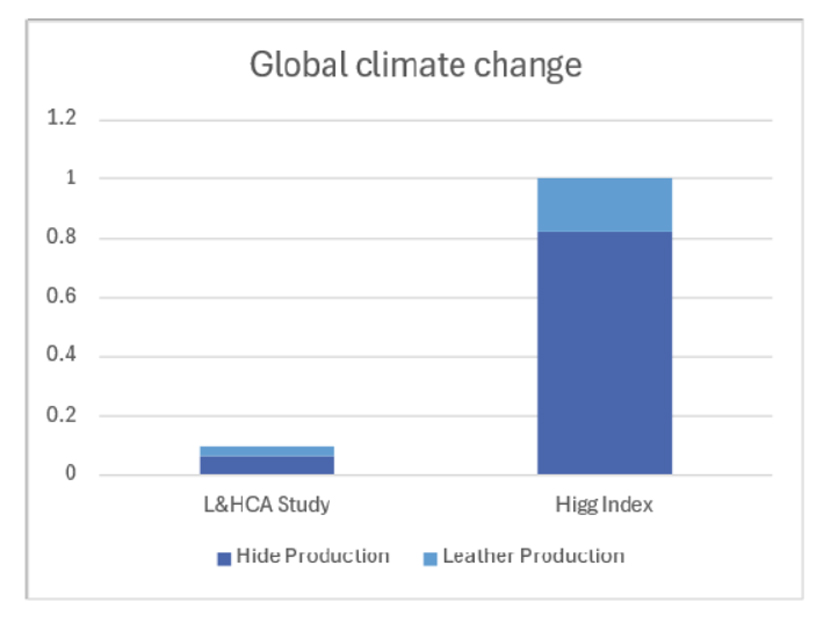
Graph 2: Eutrophication
All data indexed to Higg as 1
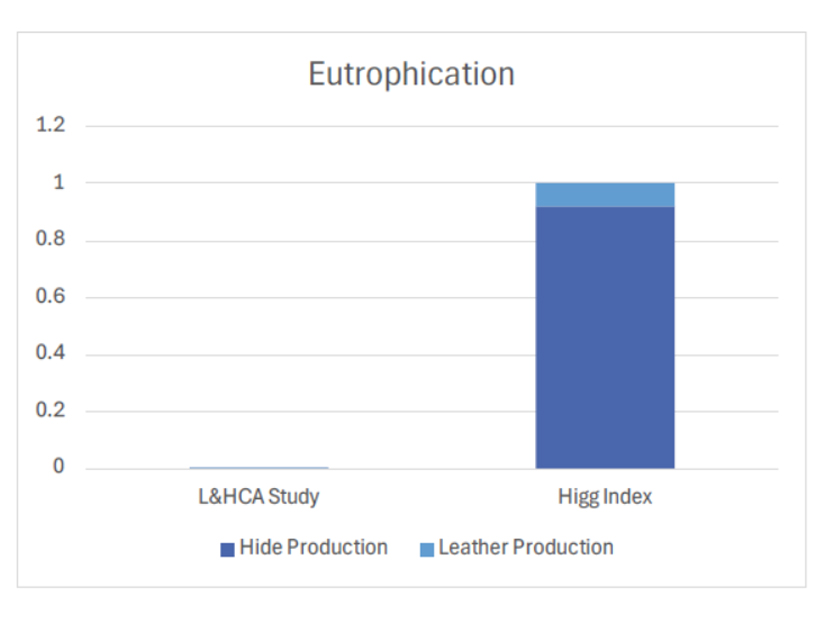
Graph 3: Abiotic Depletion/Fossil Use
All data indexed to Higg as 1
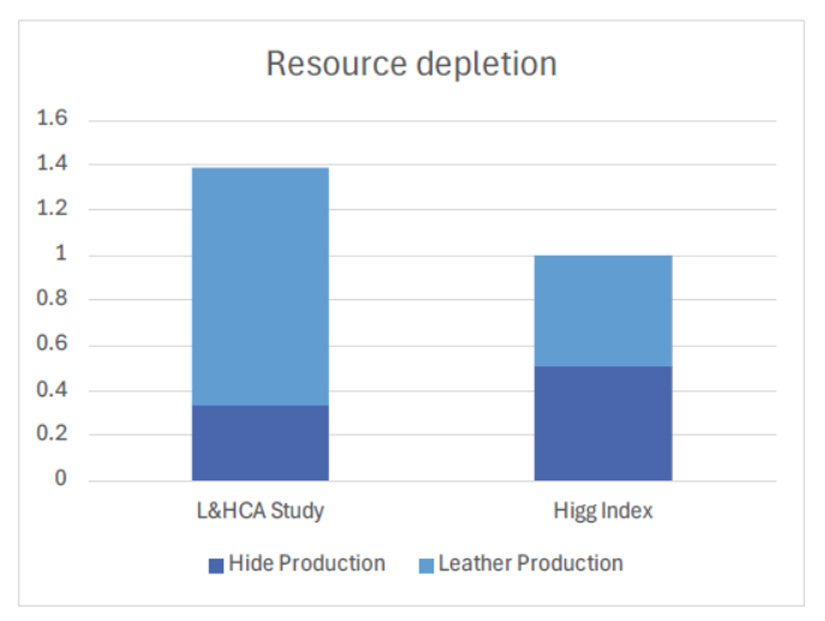
Graph 4: Water Scarcity
All data indexed to Higg as 1
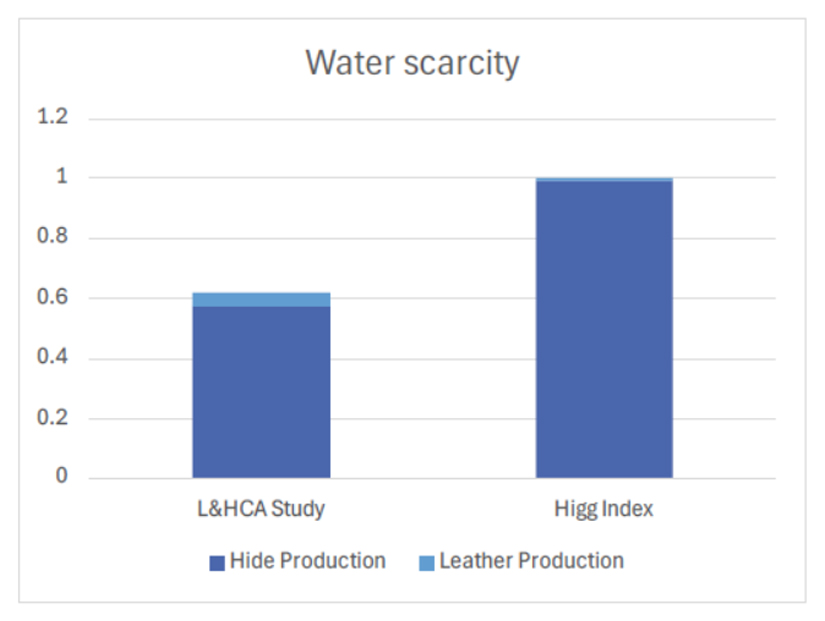
Greg Thoma, LCA lead
Greg Thoma, Ph.D. is the Director of Agricultural Modeling and Life Cycle Assessment for the AgNext program at Colorado State University. He is leading efforts at stakeholder engaged, experimentally verified, model development for sustainable animal agriculture systems. Dr. Thoma served on the steering committee from 2014-2019 on the Swiss National Science Foundation’s National Research Program titled, “Healthy Nutrition and Sustainable Food Production” that has the goal of promoting healthy nutrition through a safe, high quality food supply, available in sufficient quantity at affordable prices, while minimizing environmental impacts and fostering efficient resource utilization. Read more here.

